- Home
- Keith Douglass
Armageddon Mode c-3 Page 3
Armageddon Mode c-3 Read online
Page 3
Fitzgerald worried about his command, about his men. This cruise had strained all of them to the breaking point, and he feared that worse was on the way.
Tired, he thought. They’re all tired. He reached up, pushed the ballcap with U.S.S. Thomas Jefferson, CVN-74 emblazoned in gold above the bill to the back of his head, then removed his aviator’s sunglasses so he could rub his eyes. And I’m tired too.
The international situation was worsening … fast. The cold war between Pakistan and India had just flashed hot.
Was this their fourth major war, or their fifth? It was easy to lose track, and it depended, Fitzgerald decided, on just how the skirmishes were counted. This current clash along the Indian-Pakistan border looked like it might blow up into something as nasty as the war of ‘7 1.
There were reports of Indian armor gathering along the rim of the Thar Desert, and air strikes at Pakistani Air Force units as far west as Karachi. Tensions in the region had been mounting for weeks, the situation serious enough that the Joint Chiefs of Staff had ordered CBG-14 north from the tiny reprovisioning base on British-owned Diego Garcia to patrol the waters west of the subcontinent of India.
Such orders were typical enough for a U.S. carrier task force, charging the battle group with the protection of American lives and property.
Similar orders had taken Jefferson into Sattahip Bay two months earlier during an attempted coup in Thailand. There were thousands of American citizens in both Pakistan and India, everything from diplomats and their staffs to businessmen to guru-chasing remnants of the ‘60s at Goa and Kovalum, the “heepies” as native Indians called them. Jefferson’s presence in international waters was a warning to both governments that the United States could consider military options in order to protect U.S. citizens.
The special orders received four days earlier had diverted Jefferson and the five other vessels of CBG-14 to an imaginary circle on the Indian Ocean three hundred miles south of Karachi, and about one hundred miles southwest of India’s broad, fan-shaped Kathiawar Peninsula. Jefferson would reach that spot, informally labeled “Turban Station,” in another twenty hours. After that … well, then things would be up to the Indians and the Pakistanis, and to the new CO of Carrier Battle Group 14.
Fitzgerald made a face as he replaced his sunglasses. He still didn’t know what to make of Rear Admiral Charles Lee Vaughn.
On the forward deck, the Hornet was revving its engines to full afterburner, sending waves of heat shimmering above the deck. The white-jacketed Safety Officer was making his final check, signaling the Catapult Officer with an upraised hand.
“Amber light,” the voice of Pri-Fly said over the speaker behind Fitzgerald’s head. “Stand by. Stand by.”
Admiral Vaughn seemed competent enough, but Fitzgerald had a suspicion that it was his political connections more than his seamanship that had brought him to the Jefferson. At the very thought of politics, Fitzgerald’s stomach knotted. It was impossible to look at Vaughn and not remember the man he’d replaced.
Admiral Thomas J. Magruder had been the carrier group’s commanding officer throughout the roughest deployment Fitzgerald could remember … and his memory included three tours off the coast of Vietnam. Nothing he’d seen then or since matched what the Jefferson had experienced in this one single tour.
In eight months, CBG-14 had twice seen combat. In September Jefferson had been deployed in support of a combined Navy-Marine operation to rescue the crew of the Chimera, a Navy intelligence ship captured on the high seas by the North Koreans. Three months later, Jefferson’s battle group had been deployed to the Gulf of Thailand to support the Bangkok government during a coup attempt. Immediately after the Thailand crisis Admiral Magruder had been hurriedly summoned to Washington, and Vaughn had come aboard to replace him.
There was a hint of scandal in that summons, and the threat of a Senate inquest. The operation in Thailand had not violated the War Powers Resolution — U.S. participation had been limited to two Marine actions ashore, air support, and two alpha strikes off the Jefferson — but it had a number of Congressmen operating in full Administration-bashing mode.
Since it had come hard on the heels of Jefferson’s intervention in North Korea, some of the President’s sharpest critics were accusing him of being trigger-happy, an accusation that had trickled down to the man in charge on the scene as well. Admiral Magruder had enjoyed a distinguished and rewarding career, but if Washington needed a scapegoat he would be elected. His advice to the White House had led directly to the Presidential order to send in the Marines and the air strikes.
Admiral Vaughn had been tapped in his Pentagon office to fly to the Far East before the last of the rebels had been rounded up, arriving only a few days after the formal awards ceremony in Bangkok. He remembered Magruder’s face during the full-dress muster on Jefferson’s flight deck that muggy afternoon while the battle group was still anchored in Sattahip Bay. The man had looked drawn, worn, possibly a little subdued as his replacement stepped off the Sea Knight helo in his crisp and spotless dress whites. Only then had Fitzgerald realized how old Admiral Magruder looked, old and … beaten.
Fitzgerald had known then that Magruder was being sacrificed in the name of Washington politics.
Something was happening on Cat One. The Safety Officer was making sharp motions with his hands, and the orange glow of the Hornet’s afterburners was fading. The captain turned in his seat to watch one of the big PLAT monitors suspended from the overhead for a better view. Someone down there had scrubbed the launch.
“Four-oh-seven is down,” a voice called from the monitor speaker.
“Pressure failure to Cat One.”
“Break him down and get him the hell out of there,” the Air Boss said.
“Bridge, we have a downcheck on Cat One.”
Fitzgerald had already picked up the handset of the direct-access telephone known universally as the batphone and punched in Pri-Fly’s number. “Pri-Fly, Bridge. We see it. What happened?”
“Damfino,” the Air Boss replied. “I’ll let you know as soon as I know myself.”
Fitzgerald replaced the handset and studied the organized confusion engulfing the Hornet on Cat One. Almost certainly, the problem was human error … and directly attributable to the strain the men had been under for months. Damn, but that had been close! If the steam failure had occurred as the Hornet was being shot off the deck, the F/A-18 would not have attained airspeed and would have gone off over the bow. Unless the aviator had been both very quick and very lucky and had managed to eject safely, Jefferson would have run him down in the water.
We’d have lost another aviator, Fitzgerald thought. With so many lost already.
The Captain sensed rather than heard a change in the atmosphere around him. Several of the ship’s officers had been engaged in low conversation on the starboard wing of the bridge, but they were silent now, and the enlisted men at wheel and engine-room telegraph were standing a little straighter, a little more studiously correct.
Fitzgerald turned further and saw Captain Henry Bersticer stepping across the knee-knocker onto the bridge deck.
Bersticer was Admiral Vaughn’s chief of staff, a tall, swarthy man with a meticulously groomed black goatee that gave him a somewhat saturnine aspect. He walked over to where Fitzgerald was sitting. “Admiral’s compliments, Captain, and would you join him, please, in CVIC?”
He spelled out the letters, which stood for Carrier (CV) Intelligence Center, instead of pronouncing them “civic” in the time-honored fashion.
Bersticer was, Fitzgerald thought, new to carriers and didn’t yet have the hang of bird-farm language. He wondered if his CO had things down any better.
“Very well,” Fitzgerald said. He slid off the stool. “On my way.”
Admiral Vaughn was waiting alone in CVIC, a pale, heavyset man in his late fifties, with hair that might once have been red but was mostly silver now. Fitzgerald looked around as he walked toward the admiral.
The room, used as a TV studio for the Chief of the Boat’s morning broadcasts over one of Jefferson’s on-board TV stations, had a cluttered feel, and many of the lights and electrical cables had not been struck.
Fitzgerald winced inwardly when he saw it. Vaughn had an oft-stated love for order and the proverbial taut ship.
“Jim,” Vaughn said as Fitzgerald approached him. Bersticer shut the door, leaving them alone. The admiral reached into his shirt pocket and extracted a folded-up computer message flimsy. “This just came up from CIC. Have a look.”
Fitzgerald’s eyes held Vaughn’s as he took the flimsy and unfolded it.
It was a decoded flash priority from the skipper of the U.S.S. Biddle, now steaming some one hundred fifty miles northwest of the carrier.
Quickly, Fitzgerald read the details of the sub contact, now only minutes old. He looked up at the admiral and handed the message back.
“Farrel says it sounds like a Foxtrot,” he said. “Soviet or Indian?”
“God knows,” Vaughn said. “No matter which, I don’t want that damned thing closer than a hundred miles from this carrier, understand me?”
“Yes, sir,” he replied slowly. “If we can’t nail down that sub’s position, though, we’ll have to alter course pretty far west to maintain separation. It’ll mean quite a detour, and a delay in reaching Turban Station.”
“I know that. Frankly, I hope we can ID that sub as a Russkie. If it’s Hindi … God, we don’t know what the Indians are going to do.”
Fitzgerald grinned. “I hardly think they’ll mistake us for the Pakistani navy, sir.” Jane’s Fighting Ships gave the strength of Pakistan’s navy as seventeen ships, not counting patrol craft. The largest was Babur, a former British destroyer of 5440 tons. He’d looked it up earlier that morning.
“Damn it, Captain, this is no joke!” Vaughn scowled, rubbing at his short and bristly mustache with a forefinger. “You saw the latest set of dispatches from Washington. The Indians don’t want us out here. This whole situation could blow up in our faces at any moment.”
“I realize that, sir.” The word from Washington that morning was that a formal protest had been delivered to the White House by the Indian Embassy in Washington, objecting to U.S. warships in their waters during time of war. Accidental attacks were a possibility, the communique had pointed out, especially in the confusion of jamming and electronic countermeasures in the region once fighting started.
“Listen, Jim,” Vaughn said. “I called You off the bridge because I wanted to talk with you about this command. I’ve been following the weekly reports. Performance is way down, you know. And morale.”
Fitzgerald ran one hand through his thinning hair. “That’s hardly surprising, Admiral. They’ve been through a hell of a lot this cruise.”
“That’s no excuse, hey?”
“It’s not intended as one, sir.” Fitzgerald’s lips compressed into a hard, thin line. “This is a good ship, Admiral. And damned good men.”
Vaughn studied him for a long moment. “I want to know I can depend on them, Captain. And on you.”
“That goes without saying. Sir.” Fitzgerald knew his tone verged on the insubordinate, but he was angry now and working to keep the words formal and correct. It was Vaughn’s responsibility to direct the entire battle group; it was Fitzgerald’s responsibility to hand the admiral a ship he could work with, manned by a well-trained and highly motivated crew. When Vaughn criticized the men, he was criticizing him. That might be Vaughn’s right as CO, but Fitzgerald had the feeling that the admiral didn’t really care about Jefferson’s crew or how capable they really were.
And that worried him.
Vaughn did not seem to be aware of Fitzgerald’s anger. “Good. I’ll want you to bring the Jefferson to a new course at once to avoid that submarine.”
“Of course, Admiral.”
“And I want an ASW alert. Get some of your King Fishers up there in case they’re needed.” The King Fishers, VS-42, were Jefferson’s antisubmarine S-3A Viking squadron. “Intelligence briefing at 0800 tomorrow. I want to discuss our options.”
“Aye, aye, sir.”
“See to it.” Vaughn turned abruptly and strode toward the door. “Oh, and you might speak to your Exec about the mess here in CVIC. I like a taut ship, Captain. Can’t go into combat with gear adrift, hey?” Then he was gone.
Fitzgerald stared after him for a long moment before following. Vaughn, he decided, was still an unknown quantity. An untested quantity.
Well, odds were he would get his testing on this cruise.
1423 hours, 23 March
Tomcat 201
“Tomcat Two-oh-one, charlie now.”
Tombstone heard the words and felt the tension ebb somewhat from his shoulders and back. “They’re calling us in, CAG,” he said. He nudged the stick to the left, putting the Tomcat into a shallow, sweeping curve that would roll it out of the holding pattern several miles astern of the carrier.
“Suits me,” Marusko replied. “My safe little office back on the old bird farm is looking better and better.”
“Viper Two, Viper Leader,” he called, opening the tactical channel.
“Batman! We’re charlied. Going in.”
“Roger that,” Batman’s voice replied a moment later. “Save us a cold one. We’re right behind you.” That was almost the literal truth. His wingman was now half a mile behind Tombstone’s aircraft and three thousand feet higher, locked into the aerial racecourse of the carrier’s traffic control holding pattern, called a Marshall stack. They’d been circling there twenty-one miles from the Jefferson while the Air Boss brought in some S-3A Vikings that had been out on a sub patrol.
Tombstone leveled off. He could just make out the Jefferson’s stern far ahead, a gray rectangle nearly lost on the ocean. The flight decks on Nimitz-class carriers covered four and a half acres, but they looked ridiculously tiny from the cockpit of a fighter plane positioning itself for a trap. As they got closer, his eyes shifted to the carrier’s port side where a yellow speck of light, the “meatball,” or Fresnel optical landing system, appeared centered like a bull’s-eye above the LSO platform.
“Two-zero-one,” the voice of the Landing Signals Officer said over Tombstone’s headphones. “Call the ball.”
“Two-zero-one,” Tombstone replied, identifying his aircraft by number.
“Tomcat ball, three point one.” By “calling the ball,” Tombstone was letting the LSO know he had the landing signal in sight, that the incoming plane was a Tomcat with 3, 1 00 pounds of fuel left on board so Jefferson’s recovery crews would know how to set the tension on the arrestor cables stretched across the deck, and that he was properly aligned for a trap.
“Roger ball,” the LSO confirmed. “Looking good.”
Tombstone felt his heart begin to race. It was always like this during a carrier landing, day or night, fair weather or foul. Naval aviators without exception rated recovery on the deck of a carrier as having a higher pucker factor than air-to-air combat or an enemy SAM launch.
He lowered his arrestor hook, cut back on the throttles, and let the Tomcat sink toward the Jefferson’s deck. The carrier’s stern appeared much larger now, swelling rapidly as he dropped from the sky.
1425 hours, 23 March
Viking 704, flight deck, U.S.S. Thomas Jefferson
Lieutenant Commander Christopher Goodman had the throttles all the way back on his ungainly S-3A Viking as he spit out the arrestor cable and retracted his tail hook. Gently, he eased the throttles forward again, using the rudder pedals to steer the aircraft off the part of the flight deck delineated by broad white stripes to make way for the next incoming plane. A yellow-shirted handler backed away just ahead of the aircraft, arms extended forward, jacking them up and down, up and down as he signaled Goodman to come ahead.
He taxied slowly toward the line of planes along Jefferson’s starboard side, aft of the island. His crew — Lieutenant Hyman Gold, the copilot; Lieutenant j.g. Roger Kelso, the t
actical coordinator; and AW-1 Bill Rocco, the systems operator — all were already relaxing now that the trap was successfully completed, unstrapping their seat harnesses and preparing to shut down the bird and log out.
There was very little swell this afternoon, and the Jeff was riding the sea almost rock-steady. That was always a blessing on the rare occasions when it happened. An airplane, any airplane, might be sheer poetry in motion in the sky, but on an aircraft carrier’s deck it was transformed into a bulky, clumsy, and barely manageable beast. With a pitching deck made slippery by ice or rain, things were just that much worse.
The handler gave a two-handed pushing movement to the side, indicating a particular parking space with the aircraft lined up along the starboard side, aft of the island. Goodman swung the foot pedals farther, maneuvering toward the narrow slot. A long line of aircraft noses swept past the cockpit as he turned, all painted in dull pale grays: F-14D Tomcats, wings angled sharply back along their flanks; a pair of bulky E-2C Hawkeyes with their wings rotated sideways and back to avoid the flat, saucer shapes of their radomes mounted above their fuselages; A-6F Intruders with their wingtips nearly meeting above their backs. Space was always at a premium at sea, both on the flight deck and down below, on the carrier’s cavernous hangar deck. Planes were parked side by side with folded wings nearly touching.
Easing the fifteen-ton aircraft toward the target, he gently applied pressure to the tops of the rudder pedals, engaging the wheel brakes.
Nothing happened. Goodman felt a sinking, mushy sensation through his flight boots, then nothing at all. The Viking’s brakes were gone, and Goodman was rolling across the deck toward a narrow cul-de-sac lined with multi-million-dollar aircraft.

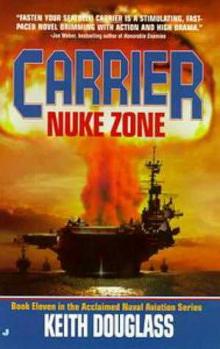 Nuke Zone c-11
Nuke Zone c-11 Seal Team Seven 6 - Battleground
Seal Team Seven 6 - Battleground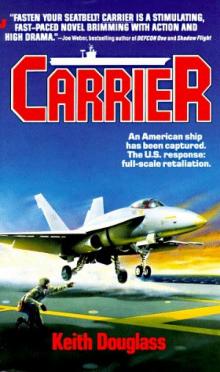 Carrier c-1
Carrier c-1 Island Warriors c-18
Island Warriors c-18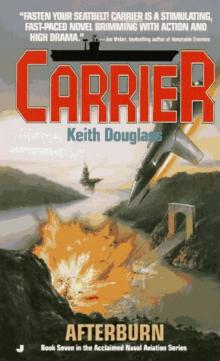 Afterburn c-7
Afterburn c-7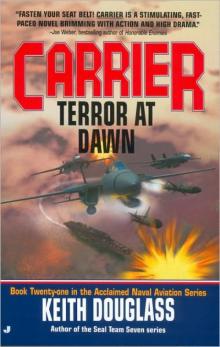 Terror At Dawn c-21
Terror At Dawn c-21 Specter sts-2
Specter sts-2 Joint Operations c-16
Joint Operations c-16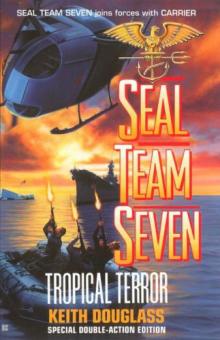 Tropical Terror sts-12
Tropical Terror sts-12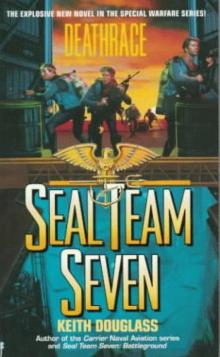 Seal Team Seven 7 - Deathrace
Seal Team Seven 7 - Deathrace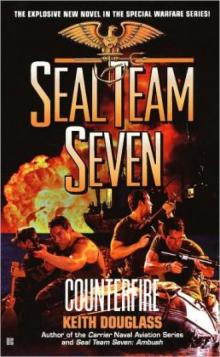 Counterfire sts-16
Counterfire sts-16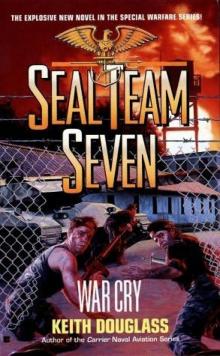 War Cry sts-9
War Cry sts-9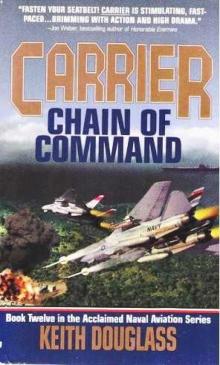 Chain of Command c-12
Chain of Command c-12 Brink of War c-13
Brink of War c-13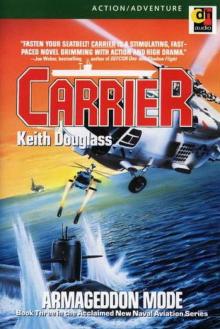 Armageddon Mode c-3
Armageddon Mode c-3 Arsenal c-10
Arsenal c-10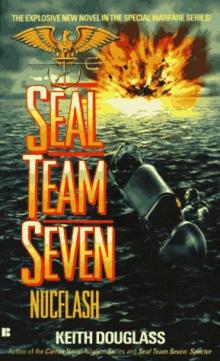 Nucflash sts-3
Nucflash sts-3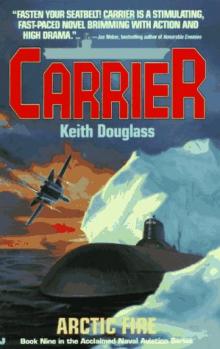 Arctic Fire c-9
Arctic Fire c-9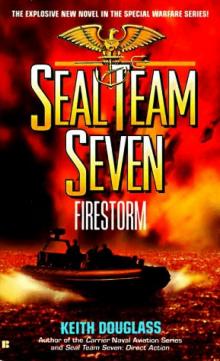 Firestorm sts-5
Firestorm sts-5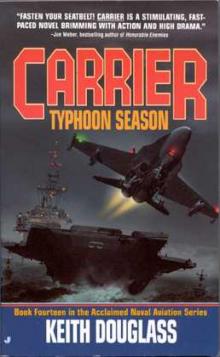 Typhoon Season c-14
Typhoon Season c-14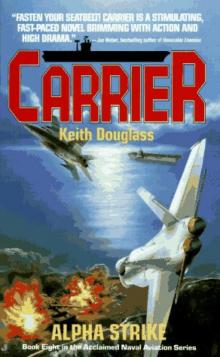 Alpha Strike c-8
Alpha Strike c-8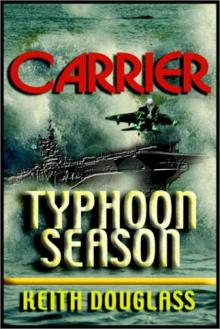 Carrier 14 - TYPHOON SEASON
Carrier 14 - TYPHOON SEASON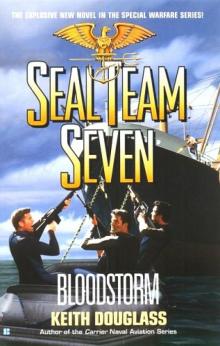 Bloodstorm sts-13
Bloodstorm sts-13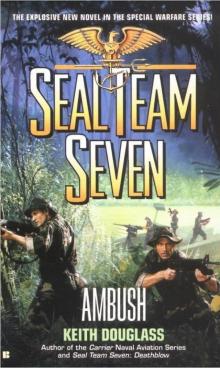 Ambush sts-15
Ambush sts-15 First Strike c-19
First Strike c-19 Flame Out c-4
Flame Out c-4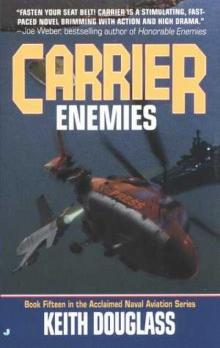 Enemies c-15
Enemies c-15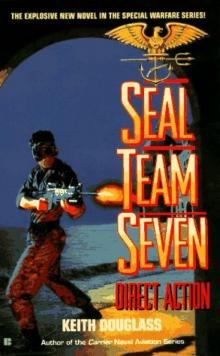 Seal Team Seven 04 - Direct Action
Seal Team Seven 04 - Direct Action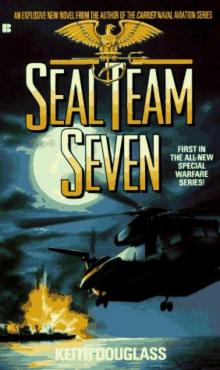 Seal Team Seven 01 - Seal Team Seven
Seal Team Seven 01 - Seal Team Seven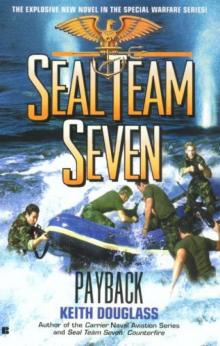 Payback sts-17
Payback sts-17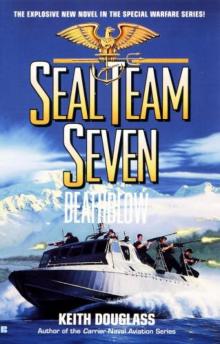 Death Blow sts-14
Death Blow sts-14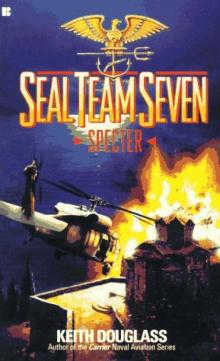 Seal Team Seven 02 - Spector
Seal Team Seven 02 - Spector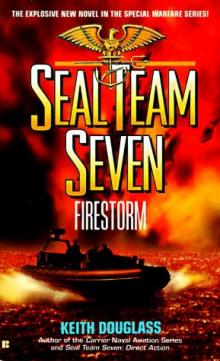 Seal Team Seven 5 - Firestorm
Seal Team Seven 5 - Firestorm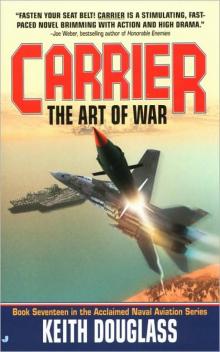 The Art of War c-17
The Art of War c-17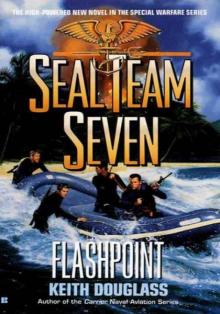 Flashpoint sts-11
Flashpoint sts-11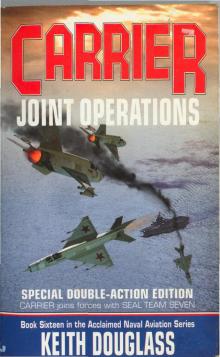 Carrier - Joint Operation Book 16
Carrier - Joint Operation Book 16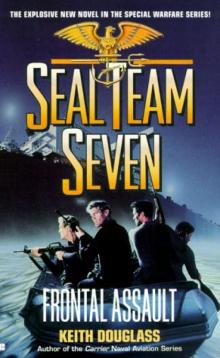 Frontal Assault sts-10
Frontal Assault sts-10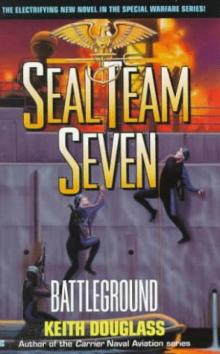 Battleground sts-6
Battleground sts-6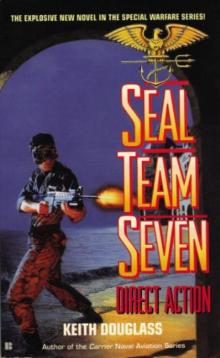 Direct Action sts-4
Direct Action sts-4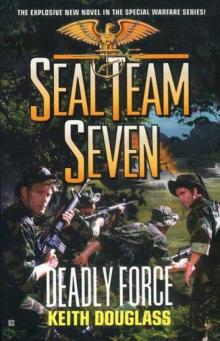 Deadly Force sts-18
Deadly Force sts-18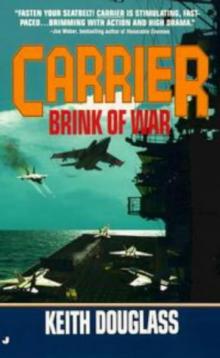 Carrier 13 - Brink of War
Carrier 13 - Brink of War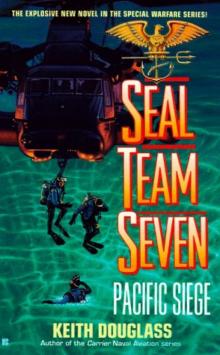 Pacific Siege sts-8
Pacific Siege sts-8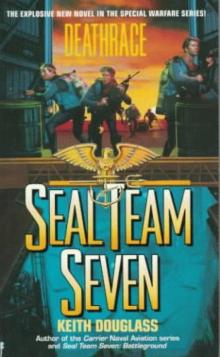 Deathrace sts-7
Deathrace sts-7